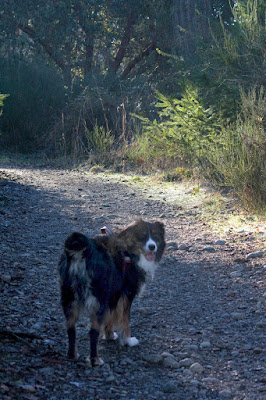Until then, I am pleased to feature a great article by Australian print-maker Annie Day. She has been a practicing artist since 1974, and is a passionate advocate of safer, healthier and more environmentally friendly printmaking techniques. A short plug- Annie and her sister Robin Ezra are teaching an exciting class in Florence, Italy, this summer. The 60 hour class covers the following safer printmaking techniques: waterless lithography, drypoint, monotype and collography. The class will be held at the world famous printmaking studio, Il Bisonte, where artists such as Picasso, Annigoni and Moore have worked. The workshop is suitable for any level of experience- you can find more information about it at their website here. I would love to go and take this class, the setting is ideal. (Maybe next year, since I'll be living a lot closer!)

Modifying Photopolymerplates with Acrylic Media by Annie Day
Less than perfect polymerplates can be readily rectified by modifying the plate surface using acrylic media. A small section of the plate can be transformed, as in the example "Chamellia"; of for a more complete overhaul, the original plate may be covered in gesso and reworked.
The original plate was overexposed resulting in a loss of contrast between foreground and background (see before). This was easily recovered however, by adding pastel primer to the plate in the areas where more ink was required, resulting in a darker final print with better contrast (see after).
Method
-Wash the plate first, this will help the acrylic media to form a good bond with the surface. Clean the ink off the plate with vegetable oil, then using soft brush or cleaning mitt and a little detergent with water gently work the surface until all ink and greasiness is removed, rinse and dry with towel. Surface is now ready to apply acrylic media.
-Use various acrylic media: gesso, pastel primer, acrylic varnish, PVC glue, and gel medium for example. Art suppliers carry a huge range of these mediums and you may already have a few types.
-Carborundum or ground pumice mixed with or sprinkled onto gesso or PVC glue will give a finish with "tooth" for darker areas similar to the pastel primer used above in Chamellia.
- The medium can be painted, applied with palette knife or other implement and drawn into to create lines and textures.
- The surface can be built up by gluing a variety of low relief textural materials- such as paper or fabric using PVC glue, seal the surface with watered gesso or varnish.
-Once the desired finish is achieved, dry the plate thoroughly with a hairdryer or airdry over night at room temperature. To speed up the process use an oven at very low temperature, 50-60 Celsius, no higher or the plate may dry out too much and crack. The plate must be completely dry before inking to avoid paper sticking during printing.
- Apply ink with a short stiff brush, wipe with a small flat piece of tarlatan and finish with paper wipe. Buy cheap flat bristle brushes and cut bristles with scissors.
Plate being modified with pastel primer and gesso
 Clear pastel primer was added for darker areas, and gesso thinned with water painted over the leaves.
Clear pastel primer was added for darker areas, and gesso thinned with water painted over the leaves.Cicada
 The sky in the print to the right was lightened using gloss varnish on the plate.
The sky in the print to the right was lightened using gloss varnish on the plate.This print after was created after a visit to the Northern Territory, Australia, it tells the story of the great Rainbow serpent, Boulong, who lived in a deep waterhole, at Nitmiluk- named after the song of the cicadas.
 Wash the plate with a soft brush or cleaning mitt in water to clean thoroughly. Gloss varnish, thinned with water, applied to sky areas to lighten. Keep the print nearby while you work and refer to areas that need change.
Wash the plate with a soft brush or cleaning mitt in water to clean thoroughly. Gloss varnish, thinned with water, applied to sky areas to lighten. Keep the print nearby while you work and refer to areas that need change.Fossil Fish
 Plate showing tissue glued to the surface with some thinned gesso and gloss varnish added over the paper. The fossil fish, Clibming Galaxis- live today in small pockets around the world. The fish has been in existence for millions of years. They are found in tiny streams leading to Manly Dam near my home.
Plate showing tissue glued to the surface with some thinned gesso and gloss varnish added over the paper. The fossil fish, Clibming Galaxis- live today in small pockets around the world. The fish has been in existence for millions of years. They are found in tiny streams leading to Manly Dam near my home.The fish plate was too dark. I covered the background in PVC glue and attached tissue paper. A thin coat of gesso and thinned gloss medium were applied to the plate. In retrospect, the paper layer might have been more succesful if I had used crushed or textured paper and added gesso applied with palette knife for more interesting textural effects.
Notes:
- Art Spectrum Colourfix pastel primer was originally designed for coating surfaces in preparation for pastel drawing, but is a great medium for our puroses as it holds ink where the artist needs darker areas to print.
-Try experimenting with various acrylic media and pasting paper and textiles etc. The plate becomes a collagraph when you add media to the surface.
- Sometimes it is difficult to find where you need to apply the medium. Outline areas you are modifying in ballpoint pen. It makes it easier to see and will not show up in the final print.



